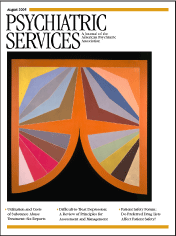A Developmental Model for Rural Telepsychiatry
Abstract
Telepsychiatry represents a promising means to increase access to care for rural American Indian communities. This article describes rural telepsychiatry clinics operated by the American Indian and Alaska Native Programs at the University of Colorado Health Sciences Center through a partnership with the Department of Veterans Affairs, the Indian Health Service, and local tribal health services that target American Indian veterans with posttraumatic stress disorder. A six-stage model for developing such services is presented. The model consists of needs identification, infrastructure survey, partnership organization, structure configuration, pilot implementation, and solidification. This article traces program development, presents challenges in implementing these services, and offers potential solutions. The model can guide the development of telepsychiatry services for American Indians specifically and rural populations in general.



